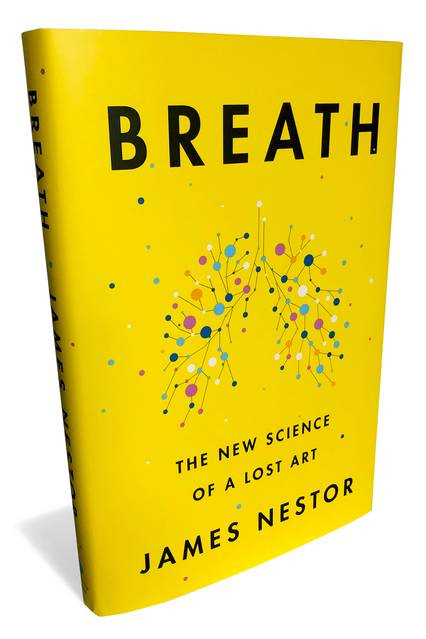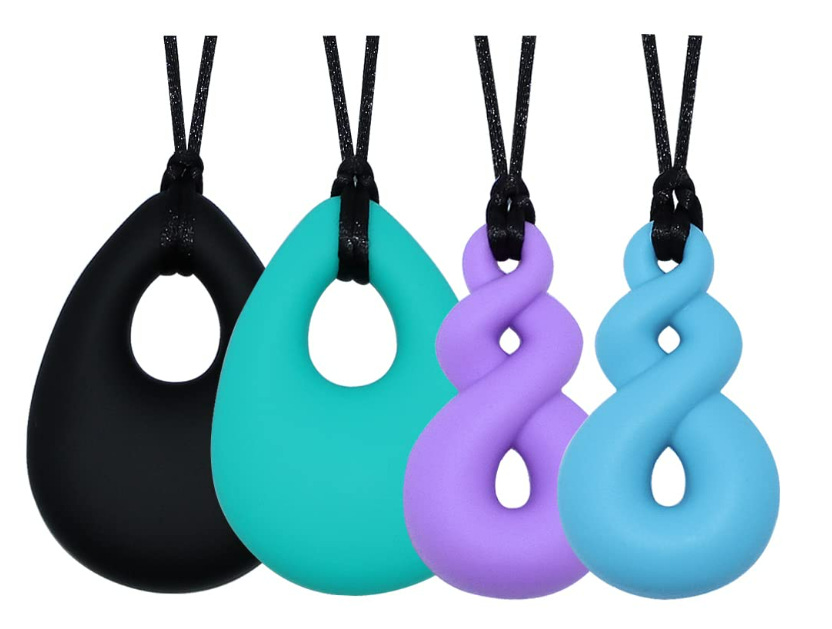Welcome to Polymathic Being, a place to explore counterintuitive insights across multiple domains. These essays take common topics and investigate them from different perspectives and disciplines to come up with unique insights and solutions.
Today's topic is an exploration of poor biomechanics and explores breathing. As simple as this might sound, most of us do it wrong, including myself. We’ll explore what we do wrong, how it affects our health, and then show what is possible if we can improve this basic human biomechanical function.
Before we start, this is a three-part series and were originally for paid subscribers as an extra thank you for their support. I’ve opened them up for everyone but your support is still critical. Please sign up for 20% off for an annual subscription making it just $24.
Part 2: We Walk Wrong:
Part 3: We Poop Wrong:
We Breathe Wrong
Introduction
Biomechanics are an interesting topic especially when analyzed against our evolutionary development and their collision with modern technology. What we find as we peel back our generally accepted lifestyles are that there are things we do every day in life that are, by and large, wrong.
Not just wrong but actually quite damaging to our ability to be active, healthy, and well-aged. It might surprise you, but we breathe wrong mostly thanks to technology.
Breathing Wrong
Breathing wrong was one of my most recent discoveries and one that I’ve been focusing on for the past two years. James Nestor’s book Breath covers this topic in depth, and it highlights a double problem; we breathe wrong AND we chew wrong. Yet these are interrelated in a way that causes our soft upper pallet and jaw to reduce in size creating a cacophony of bad health outcomes. Let’s break this down into breathing and chewing.
The breathing issue centers on how many of us breathe shallowly in our upper chest and also through our mouth, not our nose. The first affects our nervous system and the second affects our immune system and entire facial formation.
The shallow breathing actually creates a feeling of anxiety because it isn’t engaging the entire diaphragm and, specifically, the vagus nerve. Deep breathing is known to stimulate the vagus nerve which is the longest nerve in the body and connects the brain with the major organ systems. It links mental and physical processes and is the reason the mind and body are physiologically inseparable. This is similar to what we discovered in What’s in a Brain? regarding psychobiotics and the gut to brain connection.
What this means is that slow, deep breathing stimulates the vagus nerve, which runs from the brain to the abdomen and is in charge of turning off the “fight or flight” reflex. This stimulation activates the “relaxation” response of your parasympathetic nervous system to calm you down.
Breathing through the nose also conditions the air and allows pathogens to meet the first line of defense of our immune systems; mucus. This mucus traps and breaks down pathogens which are then shed back out. The conditioned air is also healthier for our throat and lungs as it is more humidified and temperature balanced.
Further, breathing through the nose keeps your mouth closed and as you swallow your saliva, the pressure of the tongue on your upper palate, over the thousands of swallows, keeps your face expanded and healthy as well as opening your sinus cavities for improved breathing.
Chewing Wrong
Our issues with chewing exacerbate our breathing issues because we aren’t getting that upper palate stimulation from breathing or eating. This is caused by our highly processed food requiring virtually zero mastication. You just don’t have to chew your food and as such, your teeth, jaws, and nasal passages don’t form correctly.
As a result, the upper and lower jaw are not expanded properly and then require major orthodontic work and even the removal of teeth to everything fit. An interesting observation is that native tribes without the processed food don’t have dental issues whereas tribes who eat a lot of processed food have terrible dental issues.
As I type this, I’m chewing a piece of Falim Gum which is a mostly flavorless but stiff gum useful for exercising the jaw. I’ve even bought Teething Necklaces for myself and my kids to chew on while doing other things.
While this might sound odd, what’s actually odd is that we take something as natural as chewing and we stop doing it the way we evolved which causes our jaw and upper palate to under develop. Then we repair it with totally unnatural orthodontics, which have pretty negative side effects and not only don’t address the breathing issues but can actually exacerbate them.
Fixing how we chew is a first step toward breathing right but we’ve also forgotten breathing techniques our ancestors knew thousands of years ago that help control our bodies and our minds, through breath. Methods to accelerate your metabolism with the Wim Hof Method baffle us with just how much mind power can be achieved. I won’t dive too deep into this today and just focus on how much impact that control of our breathing has to the rest of our bodies!
Breathing Applied
What I will dive into regarding my journey to breathing better was how it was motivated in part by my entrance into the hobby sport of freediving. You can find a detailed intro to this topic in the essay Zen and the Art (and Science) of Freediving.
Freediving is one of the most incredible studies of breathing and leverages everything we’ve learned so far. During my training and application of breathing techniques I was able to master a 5:10 static breath hold. That is, not moving but with my face in the water. The video below shows a solid 1:30 dynamic hold as I explore Alexander Springs near Orlando Florida.
This sort of breath control and body management is not possible without deeply understanding how the body’s physiology works and how interconnected everything is. We have the power to affect the autonomic nervous system through our control of the somatic nervous system. That is, the ability to exert active control over our automated systems allowing us to reset, balance, and exercise to make everything healthier.
How does breathing improve health? Well, we covered part of that earlier with immune system health as well as the bone and dental health of our facial structure. One element we teased at earlier was the nervous system and that has a huge impact on our mental health.
Learning to breathe right can trigger a multitude of health benefits including reducing depression, anxiety, stress, and PTSD and improving mindfulness. This occurs because the improper way most of us breath, in short, high chest breaths, triggers anxiety in our autonomic nervous system that causes many of these issues.
Breathing Techniques
Here are some breathing exercises that you might find helpful that you can try right now and just focus on.
Deep breathing: Inhale deeply through your nose and exhale slowly through your mouth. Try for a 3 second inhale, 3 second hold, and 6 second exhale. Repeat several times.
Equal breathing: Inhale through your nose for a count of four, then exhale through your nose for a count of four. Repeat several times.
Belly breathing: Place one hand on your belly and the other on your chest. Inhale deeply through your nose and feel your belly rise as you breathe in. Exhale slowly through your mouth and feel your belly fall as you breathe out. Repeat several times.
Alternate nostril breathing: Close one nostril with your finger and inhale deeply through the other nostril. Hold your breath for a few seconds, then exhale slowly through the other nostril while keeping the first one closed. Repeat several times.
Breath Holds: Starting with a breathe-up of #1, after three cycles hold your breath as long as you can. Fight through the CO2 build up panic. Then return to the deep breathing of #1 until your heart rate returns to normal. Then try again.
Summary
Breathing seems so simple and so natural, yet if we don’t pay attention to this incredibly foundational life force, we risk physical and mental health consequences that can easily be remedied. Breathing is the first thing we get wrong in modern biomechanics, and it’s largely caused by our loss of understanding of its importance and exacerbated by our modernization success with food and medical interventions. Yet we have the power to fix this and reclaim a foundational health benefit that helps us physically and mentally.
Stay tuned later this week for Part 2: You Walk Wrong. The next two will be for paid subscribers so please feel free to upgrade with a 20% discount for this year. One year is just $24 and goes a very long way in helping me keep the rest of these essays open for everyone.
Enjoyed this post? Hit the ❤️ button above or below because it helps more people discover Substacks like this one and that’s a great thing. Also please share here or in your network to help us grow.
Polymathic Being is a reader-supported publication. To receive new posts and support my work, consider becoming a free or paid subscriber.
Further Reading from Authors I really appreciate
I highly recommend the following Substacks for their great content and complementary explorations of topics that Polymathic Being shares
Looking for other great newsletters and blogs? Try The Sample
Every morning, The Sample sends you an article from a blog or newsletter that matches up with your interests. When you get one you like, you can subscribe to the writer with one click. Sign up here.
Also, if you have a newsletter you would like to promote, they offer a great service that gets your writing out there to a new audience.











The truth is out!
Mother always asked, "Can't you do anything right?"
Now we know the correct answer is, "No, mother; I can't even breath right."
Those ancient humans who focused on breathing knew some things at a very intuitive level, I think.